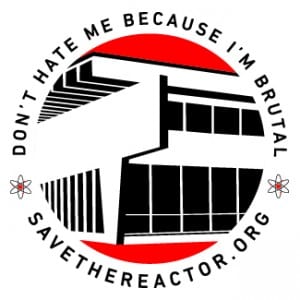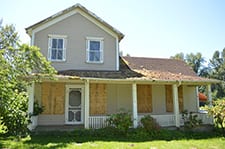Advocacy Alert and Update – December
Support P.J. Sullivan House Landmark Nomination
 There’s a significant historic property being considered for landmark nomination by the Seattle Landmarks Preservation Board on Wednesday, December 20, 2017.
There’s a significant historic property being considered for landmark nomination by the Seattle Landmarks Preservation Board on Wednesday, December 20, 2017.
The P.J. Sullivan House (1632 15th Avenue at E. Olive Street) on Capitol Hill was built in ca. 1898 for Patrick J. and Joanna Sullivan. P.J. Sullivan was the proprietor of Queen City Boiler Works before becoming engaged in real estate development. The house was designed in the Queen Anne style by the prominent architecture firm of Josenhans and Allan, credited for designing notable works such as the Marion Building at 818 2nd Avenue; the Cawsey C. C. House at 325 West Kinnear Place West; as well as Lewis, Clark, and Parrington Halls on the University of Washington campus.
Download the landmark nomination application here.
Historic Seattle will be supporting the landmark nomination of the Sullivan House and we urge you to do the same. Despite some changes to the exterior, we believe the house retains its integrity and ability to convey significance. This is an architecturally significant property that embodies the distinctive characteristics of the Queen Anne style. The house was originally built as a single-family residence but was converted to a five-unit apartment building. The 7,200 sf lot on which the house sits is zoned LR3 (Lowrise 3)—very desirable for redevelopment. Historic Seattle is monitoring the property which was listed for sale recently at $2.2M. Its current status is pending. Its future is uncertain but if you’re interested in saving the property, please consider connecting with the seller through the listing agent.
To support the landmark nomination, please submit your written comments via e-mail to Erin Doherty, Landmarks Preservation Board Coordinator, at erin.doherty@seattle.gov, before 3:00 p.m. on Tuesday, December 19th or attend the public meeting on December 20th at 3:30 p.m. and provide comments. The meeting will be held in Seattle City Hall (600 4th Avenue, Floor L2) in the Boards & Commissions Room L2-80.
Photo: historic view of Sullivan House; source: real estate listing for 1632 15th Ave)
Save the Reactor Update: It’s Not Over Until it’s Over
This summer, we shared the good news that the State Supreme Court, in a unanimous decision, ruled that University of Washington (UW) is subject to the Seattle Landmarks Preservation Ordinance (LPO). This was a huge victory for preservation advocates and the City of Seattle. The Court held that the University of Washington is a state agency that must comply with the local development regulations adopted pursuant to the Growth Management Act (GMA).
Well, it’s not over until it’s over.
In September, the UW filed a petition to the Growth Management Hearings Board (GMHB) claiming that the City of Seattle did not properly adopt the LPO pursuant to the GMA. Historic Seattle, Docomomo WEWA, and the Washington Trust for Historic Preservation were not named in the petition, but the three preservation organizations intervened in the petition to support the City of Seattle and to continue to be champions for historic preservation. The City and the three organizations filed separate motions to dismiss in October.
On October 31 (trick-or-treat!), the GMHB dismissed the case, finding that the UW, as a state agency, did not obtain the Governor’s consent to petition the GMHB for review, as required by the Revised Code of Washington; and that the UW’s petition was untimely on its face because its challenge of the LPO is about a quarter of a century too late—the appeal period is 60 days.
We were thrilled to see the case dismissed but knew that the GMHB’s dismissal of the case could be appealed to King County Superior Court. UW had 30 days (from October 31) to appeal. That date recently passed and there was no appeal by the UW.
Finally.
Preservation organizations Historic Seattle, Docomomo WEWA, and the Washington Trust for Historic Preservation have an open dialogue with the University about preservation on campus. We are hopeful for the future of the historic University of Washington campus.
 The Save the Reactor advocacy campaign is a collaboration among three preservation organizations—
The Save the Reactor advocacy campaign is a collaboration among three preservation organizations—